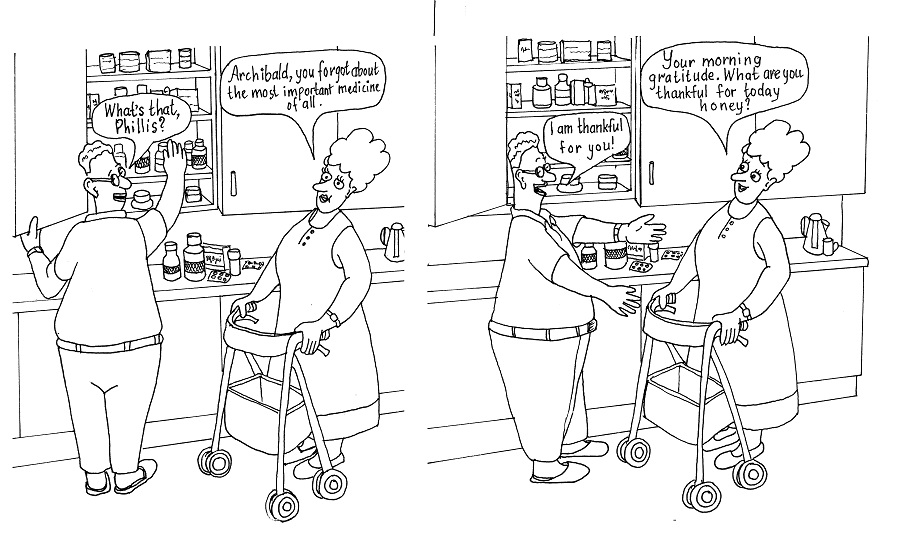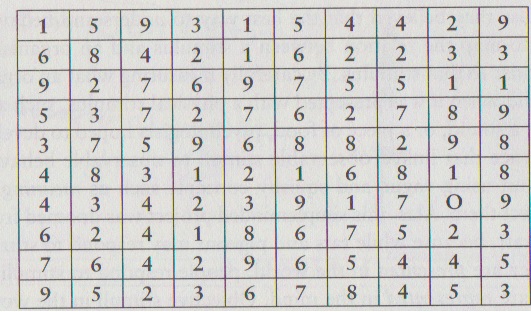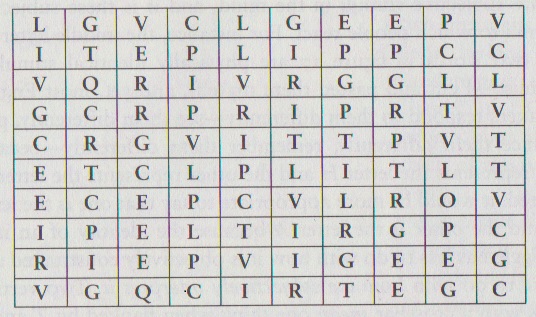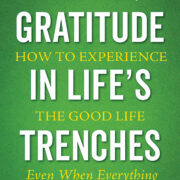
From a health perspective, this should be concerning. When we complain, stress hormones are released that harm healthy neural connections in the brain. This also occurs when we aren’t actually complaining ourselves but are exposed to someone else grumbling.
In his book Three Simple Steps: A Map to Success in Business and Life, Trevor G Blake shared some Stanford studies showing that being exposed to 30 minutes of complaining each day physically damages the brain by peeling back neurons from the hippocampus (the part of the brain used for problem solving and higher cognitive functions). Over time this can actually lead to the hippocampus shrinking, resulting in decline in memory and adaptability.
This means that if you want to keep sharp and to maintain a good memory, one of the first things you should do is take stock of the complaints you’re either making or listening to.
I’m not saying we should never complain. It can sometimes be extremely therapeutic to complain as a way of letting out emotions instead of keeping them bottled up inside. This is especially the case when we are processing feelings of grief, betrayal, shame and heartache. (See my other post ‘The Power of Complaining.’) But 95% of the day to day complaining most of us engage in serves no therapeutic function and actually makes us feel worse. So why do we do it? Why has complaining increased in a culture that has more access to comfort, opportunities and advanced medical care than our ancestors could ever have imagined?
In his book The Squeaky Wheel, psychologist Guy Winch summarizes what Gregg Easterbrook has called “the progress paradox”, which is the phenomenon that as life gets better we get unhappier:
…as our lives have become better and more comfortable over the last century, many of us have actually become unhappier as a result. Our expectations have dramatically risen, leading to more opportunities for us to experience disappointment and frustration and consequently to complain.
Grateful for What is Normal
When progress occurs on a culture-wide level, not only do our expectations go up, but the baseline for normality rises to such an extent that it’s easy to start overlooking just how blessed we are for commonplace realities.
Consider that much of what we think are justifiable grounds for complaint, and many of the circumstances that we become unhappy about, actually occur against the backdrop of lifestyles that are unimaginably prosperous and blessed from the perspective of all human history. The normal things in our life that ought to be occasions for profound gratitude are often overlooked precisely because they are so normal.
For example, when was the last time you registered gratitude for clean drinking water? When was the last time you were grateful for the absence of enemies on the border of your town? When was the last time you experienced gratitude for the accessibility of books, music, tools and comfortable transportation?
We’re naturally grateful for the things that are out of the ordinary—a bonus from work, a warm comment from a stranger, an extra special meal, an appreciative letter from a friend we haven’t seen in years, and so on. But we have to really work to cultivate gratefulness for the ordinary things that we tend to take for granted—our normal paycheck, routine kindness from family members, not having to go hungry every day, having a warm place to sleep at night, to say nothing of cultural advances that are ubiquitous. When you think about, these ordinary things ought to occasion the highest levels of gratitude. We ought to be grateful for these things precisely because they happen frequently enough to become normal.
So why aren’t we more grateful for ordinary things? To answer this question I want to take a little diversion and explain how the human brain works and what we can do to hack around a central “flaw” in our brain.
Perception and Disambiguation
Look at the collection of numbers below. There is a letter O in these numbers – see if you can find it.
Now look at this collection of letters and see if you can find the same letter O.
(The source of these images is Daniel Gilbert’s book Stumbling on Happiness.)
Most people can locate the letter O quicker in the collection of numbers than in the collection of letters. Why is that? It’s because in the first collection the letter O is surrounded by dissimilar characters, namely numbers, and so the letter O stands out. In the second collection the letter O is surrounded by similar characters, namely letters, and so it blends in. When something blends in we are less likely to recognize it as quickly as when it stands out.
But what if I had told you that it wasn’t the letter O we were looking for but the number 0? In that case, research suggests that you would have found it faster in the second collection (the collection of letters) because suddenly it has become dissimilar.
The important point to this little exercise is that meanings matter. The meanings we attach to objects effect our perception of those objects.
This can be illustrated with another diagram (again, taken from Dan Gilbert’s book).
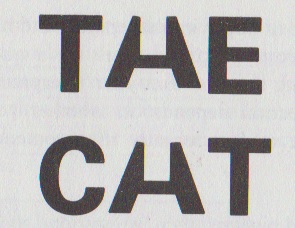
What is happening here is that the brain imposes meaning on ambiguous characters. This is called “disambiguation”, which refers to the removal of ambiguity by making something clear. The human brain does this naturally, without us even thinking about it. We want to find meaning in things; we want ambiguity to be minimized. Hence, when presented with anything that might be unclear, the brain instinctively narrows down the range of available meanings and fixates on the meaning that makes the most sense.
But what criteria govern the brain’s process of disambiguation? When the brain chooses one meaning over another, what is this choice based on?
Research suggests that disambiguation occurs based on what makes the most sense to us. What makes the most sense is conditioned by context familiarity. For example, in the case of the above picture, it wouldn’t have made any sense for the middle character to be an A in the first instance and an H in the second, or visa versa. The context (namely the surrounding letters), plus familiarity (namely, the words we’re accustomed to as English-speakers), determine that our brains disambiguate the characters to spell The Cat. Just as, in the earlier example, the brain could be primed to recognize the letter O quicker in the second collection by calling it a zero, so in this case the brain is primed to think of the middle character as an H and A respectively. And again, it is context and familiarity that help prime our brains in this way.
So let’s take stock of what we’ve covered so far and distill some principles from it:
- The human brain naturally “disambiguates” the objects of perception.
- The process by which we disambiguate (impose meaning) on the data of sense experience is based on context and familiarity.
- The meanings we attach to objects affect our perception of those objects.
It may be helpful to go around the block with this third point and tease out some of the implications.
When stimuli reach the brain through our senses we tend to think the meaning of the stimuli is inherent to the thing itself. But in actuality, most stimuli is ambiguous in itself, just as the middle character in those words was ambiguous. Our brain responds to what we think the stimuli means and not the stimuli itself. The brain prefers one meaning to another, and the meaning the brain prefers tends to be the one that removes ambiguity. Thus we can say that human beings do not merely respond to stimuli as it is presented to our sense; we also respond to stimuli as it is represented to our minds via the meanings we unconsciously attach to the stimuli.
This may seem obvious, but it is a point that was overlooked by much of the behaviorist research that occurred in the mid twentieth-century that failed to account for the difference between presentation and representation. The psychologist Daniel Gilbert explained about this oversight in his book Stumbling on Happiness:
“Meanings matter for even the most basic psychological processes, and while this may seem perfectly obvious to reasonable folks like you and me, ignorance of this perfectly obvious fact sent psychologists on a wild-goose chase that lasted nearly thirty years and produced relatively few geese. For much of the last half of the twentieth century, experimental psychologists timed rats as they ran mazes and observed pigeons as they pecked keys because they believed that the best way to understand behavior was to map the relation between a stimulus and an organism’s response to that stimulus. By carefully measuring what an organism did when it was presented with a physical stimulus, such as a light, a sound, or a piece of food, psychologists hoped to develop a science that linked observable stimuli to observable behavior without using vague and squishy concepts such as meaning to connect them. Alas, this simpleminded project was doomed from the start, because while rats and pigeons may respond to stimuli as they are presented in the world, people respond to stimuli as they are represented in the mind. Objective stimuli in the world create subjective stimuli in the mind and it is these subjects stimuli to which people react.”
This same problem that dogged so much of the laboratory research of the 20th century is also creating huge obstacles for machine learning and the advance of A.I. in the technology industry. If a human is driving a car and sees a road covered with leaves, the human can easily interpret the visual cues in such a way as to know “Hey, this is a road covered with leaves.” The human brain has no trouble disambiguating this type of data because we do not merely see the world as a jumble of particulars; rather, we see the world as an ecosystem of meaning, where meaning is based on context, past experience and what we are familiar with. But if a computer is driving the car, it really struggles to recognize that a road with leaves is still a road. The fatality of Joshua Brown when his Tesla vehicle was on Autopilot resulted from the computer not recognizing that a certain configuration of objects “meant” the white side of a turning tractor-trailer and not a brightly lit sky. How to get a computer to accurately disambiguate is a huge problem in the machine-learning industry.
The human brain is just as capable of error as a self-driving car. In fact, because our minds impose meaning on objects so effortlessly, instinctively and quickly, we also make crazy mistakes. Just as the self-driving Tesla mistakenly interpreted the white side of a turning tractor-trailer to be a brightly lit sky, so the human brain is also susceptible to misinterpret objects of sense perception by assigning wrong meanings on what we observe. As an example, look at the following diagrams:

This is an example of how context and familiarity determine the meaning we impose on objects, yet do so in ways that can be misleading. When the context we are familiar with is artificial, as when we live sedentary lives indoors where the walls terminate in “artificial” corners (artificial in the sense that the types of right-angels we are used to indoors are not found in nature), we can be misled.
People who live all their lives outdoors can also be misled in other ways. I read somewhere about an anthropologist who met a man who had lived his entire life in the jungle. The anthropologist took a trip with the native into the grasslands, offering the latter his first experience of wide-open spaces. In the far distances were some buffalo grazing which the native mistook for insects. His long-distance vision had never been developed, having lived all his life in the jungle where everything is up close. His immersion in the context of the jungle left the native unprepared to accurately assign meaning to far-away objects.
We don’t merely disambiguate things we see; we also disambiguate our experiences. No one has to tell us that a group of people standing in single file behind a limited resource means that they are forming a line to take turns at approaching the resource. Given context and familiarity, our mind effortlessly and correctly interprets this type of social action as forming a line.
But our minds can also make mistakes when it comes to interpreting experiences. A key theme in cross-cultural psychology is studying how people from one culture can misinterpret people from another culture because of not sharing a familiar context. For example, why is it that when the phenomenon of lovers kissing on the lips was first documented in India, around 1,500 B.C., it was described as people “sniffing” each other? If you’re not familiar with the context of kissing, the action will appear to mean something different, and it might seem perfectly natural to conclude that the lovers are sniffing one another.
By now my basic point should be clear: the human brain exploits ambiguity by imposing the most likely interpretation on the objects of our observation, including interpretations that can sometimes be inaccurate. Context and familiarity can sometimes mislead us, whereby we wrongly interpret the objects and events of our perception.
Let’s consider some examples close to home of how context and familiarity mislead us every day.
Misled by Familiar Contexts
What does is mean to be wealthy? What does it mean to be creative? What does it mean to be pretty? What does it mean to be smart? What does it mean to be physically fit? What does it mean to have a happy family, a clean house, a fulfilling marriage, a good job, or sufficient leisure time?
Whether or not we can answer these types of questions in the abstract, most of us know—or think we know—roughly what a person looks like who is wealthy, creative, pretty, smart, fit, etc.. That is to say, we could all think of examples of these qualities based on our range of experiences. Yet the tricky thing is that the standards we unconsciously use to measure these qualities are based on the familiar context to which we are accustomed, including contexts that mask over how ambiguous our experiences actually are.
Let’s jump into some concrete examples to see just how ambiguous raw experience actually is.
Consider that since the advent of social media, increasing numbers of people have come to think that they have less leisure time than their peers and have less attractive-looking family members. Research suggests that the more time people spend on Facebook, the more discontent they are. This makes sense given the fact that Facebook makes us familiar with contexts that are not always accurate. What we forget is that people tend to use social media only to exhibit what they want others to see, leading to public impressions that can be highly customized and one-sided. Again, the contexts we are familiar with may be misleading, resulting in inaccurate disambiguation.
Another example of inaccurate disambiguation is wealth. Research suggests that a moderately wealthy person living in a very rich neighborhood will typically feel poorer than a person of modest means living in a poor neighborhood. In such cases, a person tends to unconsciously assume a certain interpretation of his or her life that is disproportionately governed by the relative context. Simply by switching the context you switch what the person’s life “means.”
Another example is physical beauty. Prior to the advent of mass television, a greater number of girls could lay claim to being physically attractive. TV and mass advertising have homogenized the concept of beauty so that the standards constituting physical attractiveness have become out of reach for more women. What we think it “means” to be pretty is governed by contexts that are highly unrealistic.
What these and other examples suggest is that we often judge ourselves and others based on criteria that is both unrealistic and purely relative, leading to inaccurate disambiguation. The meanings we attach to situations and events affect our perception of those situations and events, but these meanings are often governed by contexts that are relative, ambiguous and misleading.
Complaining as a Way of Seeing
This brings me back to my original question, “Why do we grumble and complain about our lives?”
When we grumble, it’s often because we have a certain ideal in our minds that we are measuring ourselves against. This ideal creates a context through which we disambiguate what we perceive from our own life. Often the contexts in which we are accustomed to living create the illusion that our ideals are objective. Maybe that ideal is based on our peer-group, maybe it’s based on television, maybe it’s based on impressions we’ve received from social media like Facebook, or maybe it stems from a combination of all of these plus other things. Whatever its origin, it’s easy to begin measuring ourselves against a context that is both unhelpful and inaccurate. Perhaps the most misleading context against which we measure ourselves is the context of our abundant culture. Living one’s entire life surrounded by abundance can leave a person unprepared to assign an accurate valuation to things we take for granted, just as the native who had lived his entire life in the jungle was unable to accurately recognize things in the distance.
Remember, the meanings we attach to objects effect our perception of those objects. Our brain responds to what we think the stimuli means and not the stimuli itself. Thus, if you are in the habit of ascribing negative meanings to your life, if you routinely put a negative spin on things that happen to you, this will actually alter how your brain perceives the circumstances of your life. Since the human brain defaults to the familiar in assigning meaning to new circumstances, negativity can become second-nature if that is what we’ve allowed our brain to become the most familiar with. Remember, the human brain wants to find meaning in things, and if we do not consciously pursue positive meanings, our brain will default to the negative.
To sum, complaining arises from one way of seeing our lives. We grumble and experience discontent to the degree that we ascribe a certain meaning (in this case, a negative meaning) to what we perceive about the circumstances of our lives or the lives of those around us. As the 1st century Stoic philosopher Epictetus remarked, “Man is disturbed not by things, but by the views he takes of them.”
The good news is that just as there are multiple ways to disambiguate the visual data reaching our senses (some more accurate than others), so there are alternative ways to disambiguate what we perceive about the circumstances of our life. Grumbling arises from preferencing one interpretation of our life over another possible interpretation. Taking the step from grumbling to gratitude is a matter of choosing a different context in which to perceive what is happening in our lives.
Gratitude as Right Perception
Take a look at Necker cube below. Wikipedia explains how “each part of the picture is ambiguous by itself, yet the human visual system picks an interpretation of each part that makes the whole consistent.” Most people, when they stare at the dot, perceive it to be in the lower back right-hand corner of the cube. Yet if you stare at it long enough (between 4 and 15 seconds), suddenly the frame of reference switches and the dot is perceived to be on the top right-hand corner of the cube. Try it for yourself.

But how exactly does a person go about changing the context of his or her life? A good place to start is to dispense with unreal ideals and comparisons. If you want to compare yourself to others, be objective and compare yourself to the more accurate sampling of human beings throughout history. Think about all the blessings that are accessible to you that weren’t available to your grandparents. Thing about the blessing of having access to advanced medical care, sanitation, information, TV (which is essentially to have your own personal drama company that performs at the click of a button). Think of the blessings of being able to live in relatively safe towns, exercise freedom of religion, have devices that enable you to talk to friends living in other parts of the world. The blessings that are part of normal life are things we neither deserve nor have earned. The paradox, however, is precisely that because these blessings are so widespread, we take them for granted and fail to perceive them as blessings. As I pointed out in my article, ‘Gratefulness and the Rising Baseline,’
“As a culture, the average person now lives at the baseline of conditions that constitute wealthiness when wealth is calculated by historical standards. In the past, only kings would have been able to ride in a chariot with musicians playing in the back; now our stereo-equipped cars allow even a person of modest means to experience this luxury. In the past, only kings would have been able to own private bathing quarters where members of their household could soak in hot water at any time of the day or night; now almost anyone can experience this luxury in the average house equipped with a bathtub. Examples could be multiplied endlessly, but the point I wish to make is that the proliferation of so much wealth has not led to more gratefulness but to less. Researchers have found that a little money can buy a lot of happiness for a poor person while a lot of money can only buy a little happiness for a rich person; in a similar way, it seems that small blessings lead to a lot of gratefulness for poor people sooner than a lot of blessings lead to more than merely a little gratefulness for wealthy people. Ergo, as a culture we are very wealthy, and consequently it takes a lot to make us grateful, but then as soon as we have everything we want the baseline of our expectations shift, thus neutralizing our consciousness of blessing.”
The first step to developing a posture of gratitude is learning to become conscious of our blessings through recognizing that our context for determining what is “normal” is culturally conditioned and is itself the result of a general abundance for which we can be profoundly thankful. We shouldn’t have to travel to third-world countries to realize this.
When we come to appreciate how the normal things we take for granted are unprecedented (historically speaking), we can learn to perceive everything in our lives, including trials and struggles, against a more accurate backdrop. In this way, we can find begin to find meaning in the ambiguity of our lives, a meaning suffused with profound gratitude.
Gratitude is not a type of feel-good escapism whereby we tell ourselves that things are good when they are not; rather it is learning to “see” our life in a new way and to perceive the good that may be obscured by the familiar context of the ordinary.
